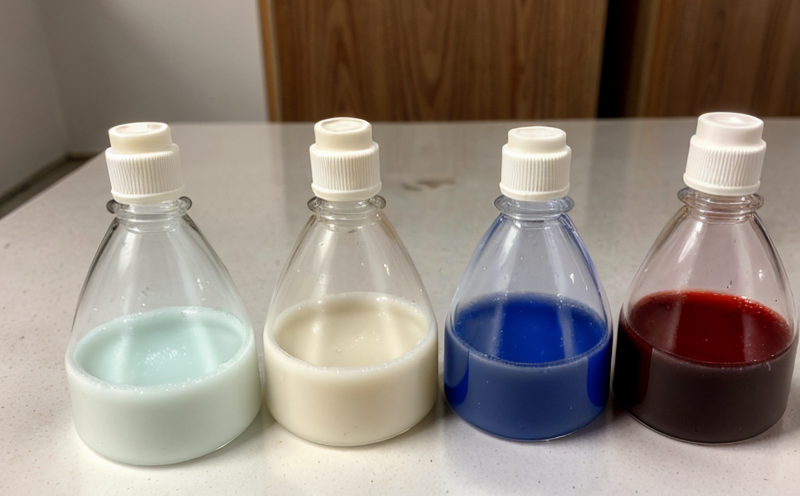PET Oligomer Content Testing
Polymers like Polyethylene Terephthalate (PET) are widely used in packaging and textiles due to their strength, durability, and recyclability. However, the presence of oligomers within PET can significantly impact its quality and performance characteristics. This is particularly important for applications that require high purity or long-term stability, such as food-grade containers, medical devices, and advanced textiles. In this section, we delve into the intricacies of testing PET oligomer content to ensure product integrity.
PET oligomers are short chains or fragments of PET that can form during polymerization processes or through degradation. These oligomers can influence the mechanical properties, transparency, and chemical resistance of PET products. Accurate quantification of PET oligomer content is crucial for quality control and compliance with industry standards. This service ensures that PET materials meet stringent requirements set by regulatory bodies like ISO 11263-1:2018 or ASTM D7924.
The testing process involves several key steps, including sample preparation, instrumental analysis using techniques such as gas chromatography (GC) with mass spectrometry detection (GC/MS), and interpretation of results. Sample preparation is critical to ensure accurate measurements. This includes dissolution of the PET sample in a suitable solvent followed by filtration to remove any particulate matter.
Instrumentation plays a vital role in this testing process. GC/MS systems are preferred due to their sensitivity and ability to differentiate between various compounds present in the sample. The method typically involves derivatization of the oligomers prior to injection into the GC column, which enhances detection efficiency. After analysis, results are interpreted based on comparison with known standards or reference materials.
Reporting is comprehensive and includes detailed information about the detected oligomer types along with their concentrations relative to the total PET content. This data helps in assessing whether the product meets specified quality thresholds. For instance, if a customer specifies that less than 1% of oligomers should be present, our testing ensures compliance.
In conclusion, PET oligomer content testing is essential for maintaining high standards in polymer manufacturing and usage across various sectors including packaging, textiles, and automotive industries. By leveraging advanced analytical techniques, we provide accurate insights into the presence and concentration of these compounds within your PET products.
Scope and Methodology
The scope of this service encompasses detailed analysis aimed at quantifying the amount of oligomers present in Polyethylene Terephthalate (PET). This is achieved through rigorous sample preparation procedures followed by instrumental analysis using gas chromatography coupled with mass spectrometry (GC/MS).
- Sample Preparation: Samples are dissolved in a suitable solvent and filtered to eliminate any particulate matter.
- Instrumental Analysis: GC/MS is used for precise detection and quantification of oligomers. Derivatization steps enhance sensitivity.
The methodology adheres closely to international standards such as ISO 11263-1:2018 and ASTM D7924, ensuring accuracy and reliability in our findings. Our team follows these protocols meticulously to deliver reliable results every time.
Why Choose This Test
Choosing PET oligomer content testing is pivotal for several reasons:
- Quality Assurance: Ensures that the final product meets strict quality standards and specifications set by industry regulations.
- Compliance: Helps manufacturers comply with legal requirements governing polymer use, especially in food contact applications.
- Product Integrity: Guarantees that PET products are free from harmful impurities which could compromise their performance or safety.
- Innovation: Supports research and development efforts by providing data necessary for improving product formulations and enhancing material properties.
By investing in this testing service, you ensure that your production processes are optimized and that the end products meet global standards. This not only enhances customer confidence but also strengthens your brand reputation in competitive markets.
Quality and Reliability Assurance
To ensure the highest level of quality and reliability in our services, we follow stringent protocols throughout every stage of sample handling, analysis, and reporting:
- Sample Handling: Samples are handled carefully to prevent contamination or degradation.
- Analytical Techniques: Advanced GC/MS systems equipped with high-resolution mass spectrometers provide accurate data.
- Data Interpretation: Results are meticulously reviewed and compared against established reference materials.
- Reporting: Reports are prepared in collaboration with clients to ensure clarity and relevance.
We also participate in proficiency testing programs recognized worldwide to further validate our analytical capabilities. Our commitment to quality is reflected in the consistent accuracy and reliability of our test results.





